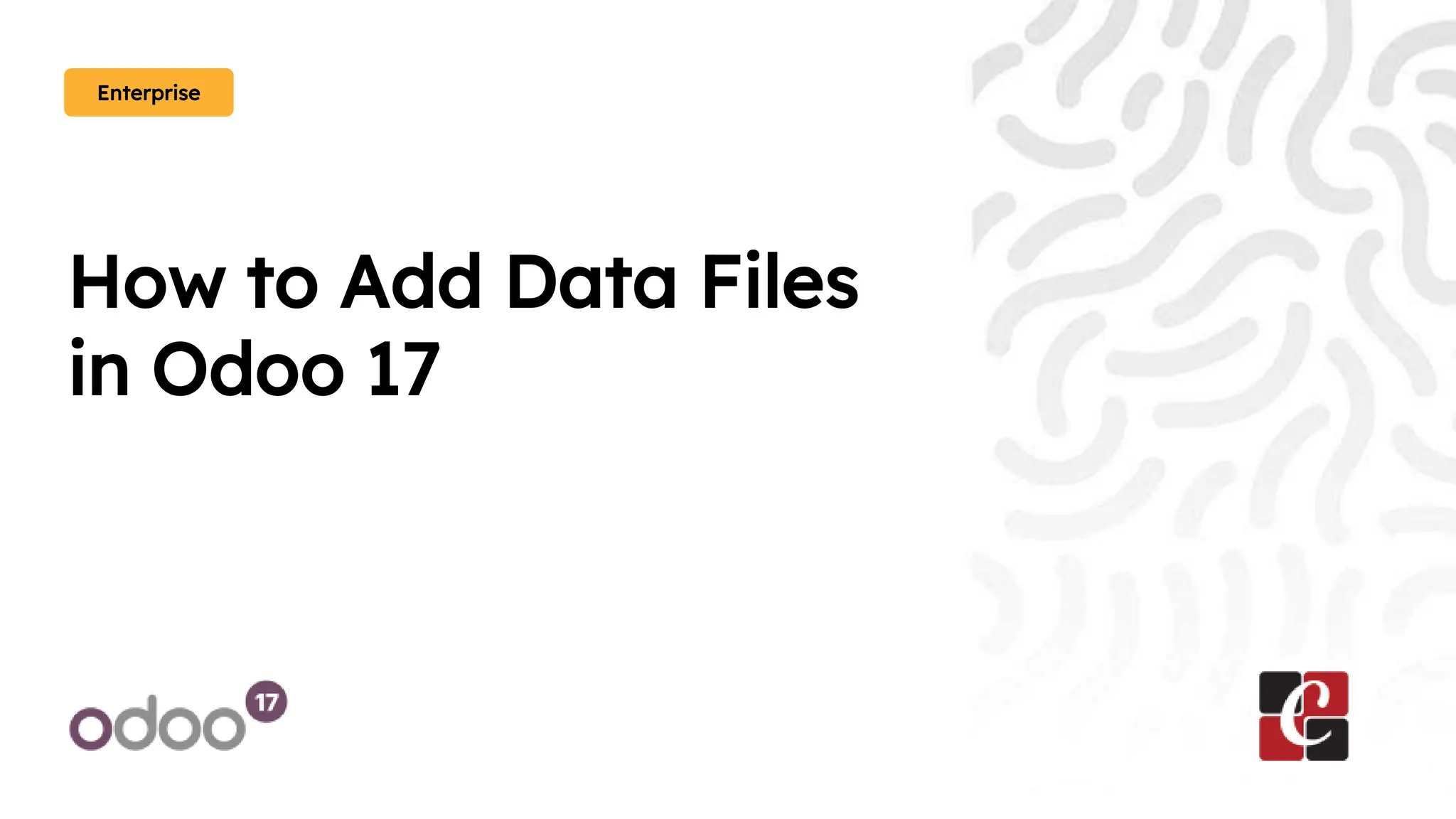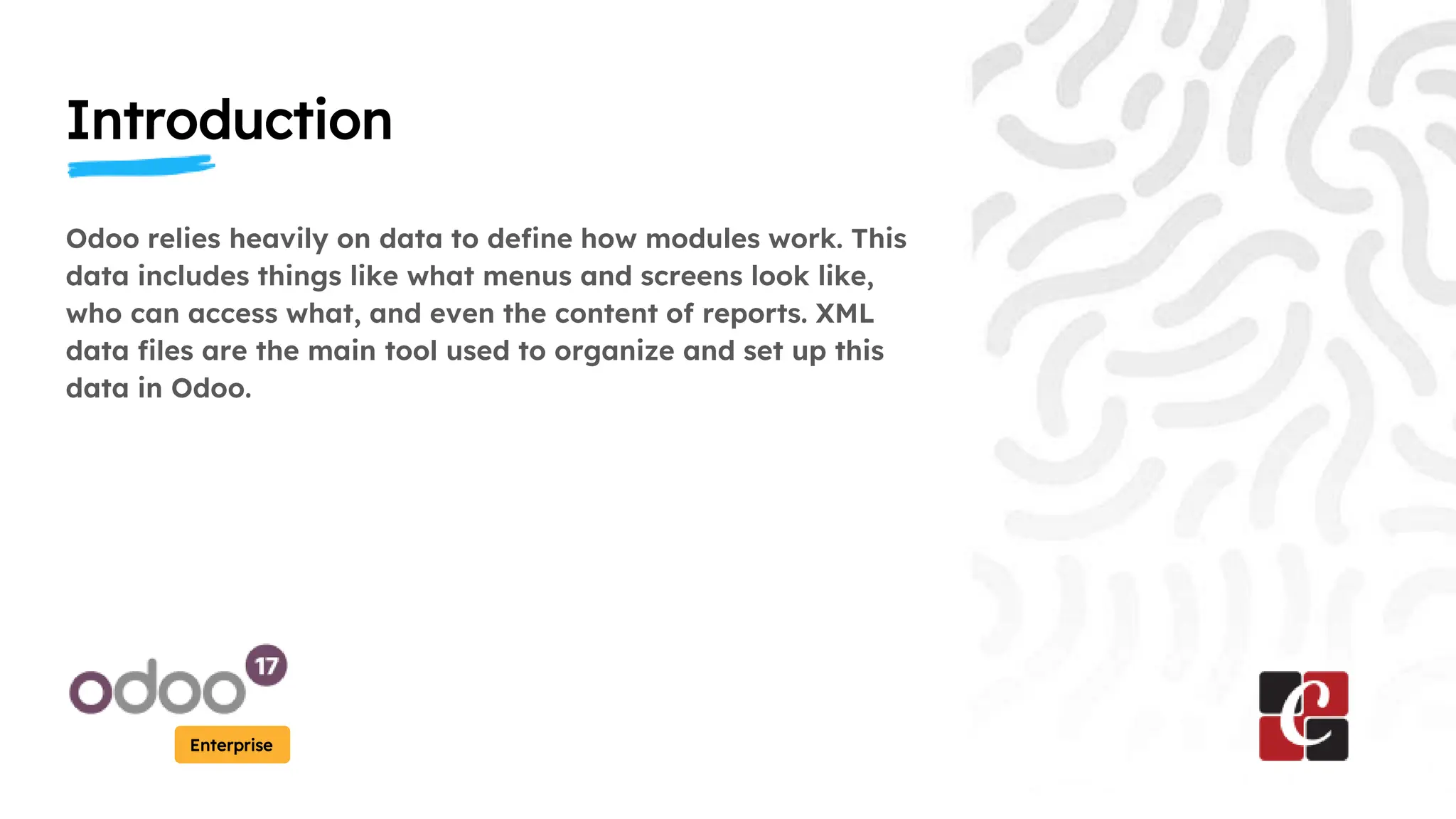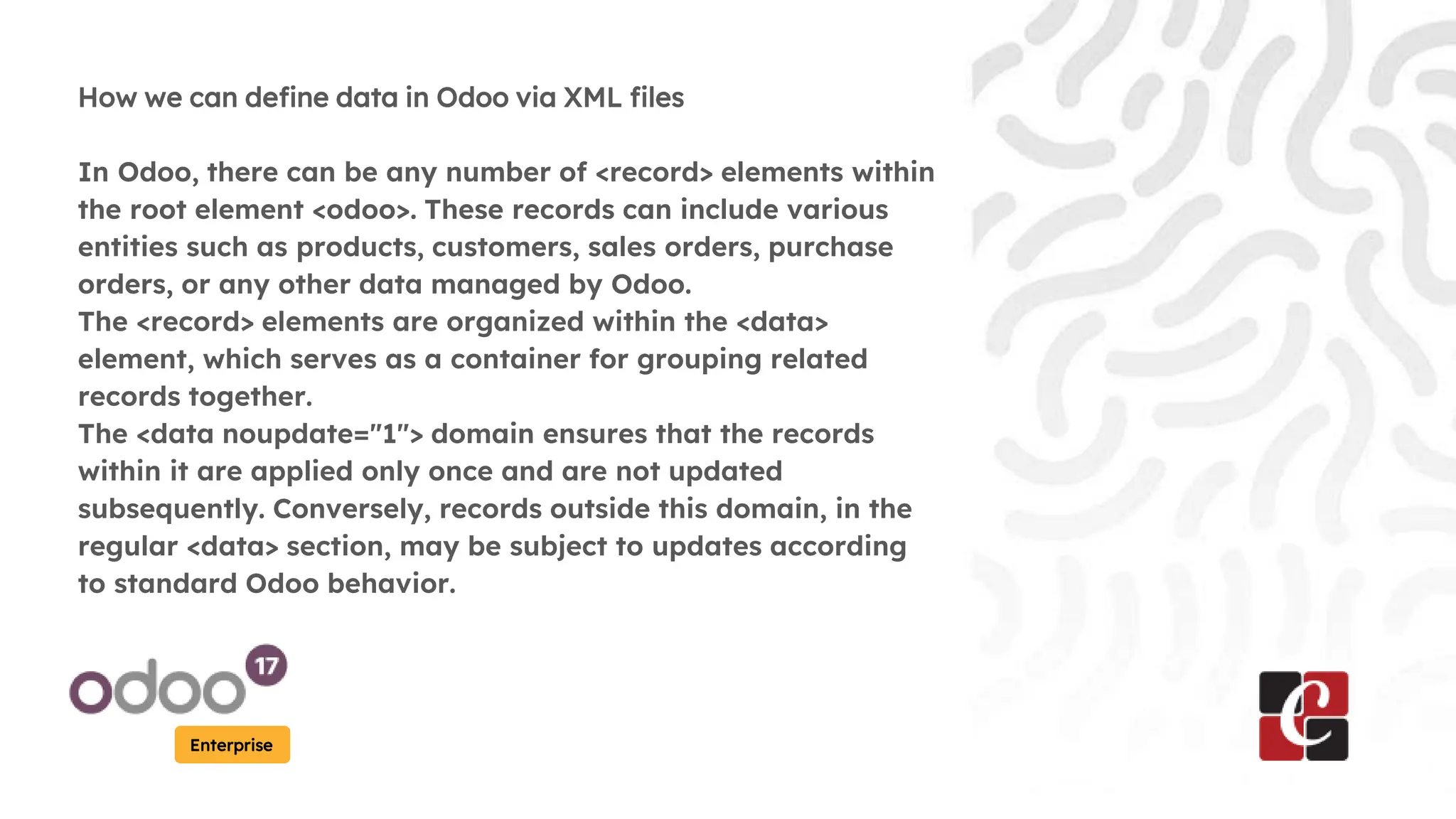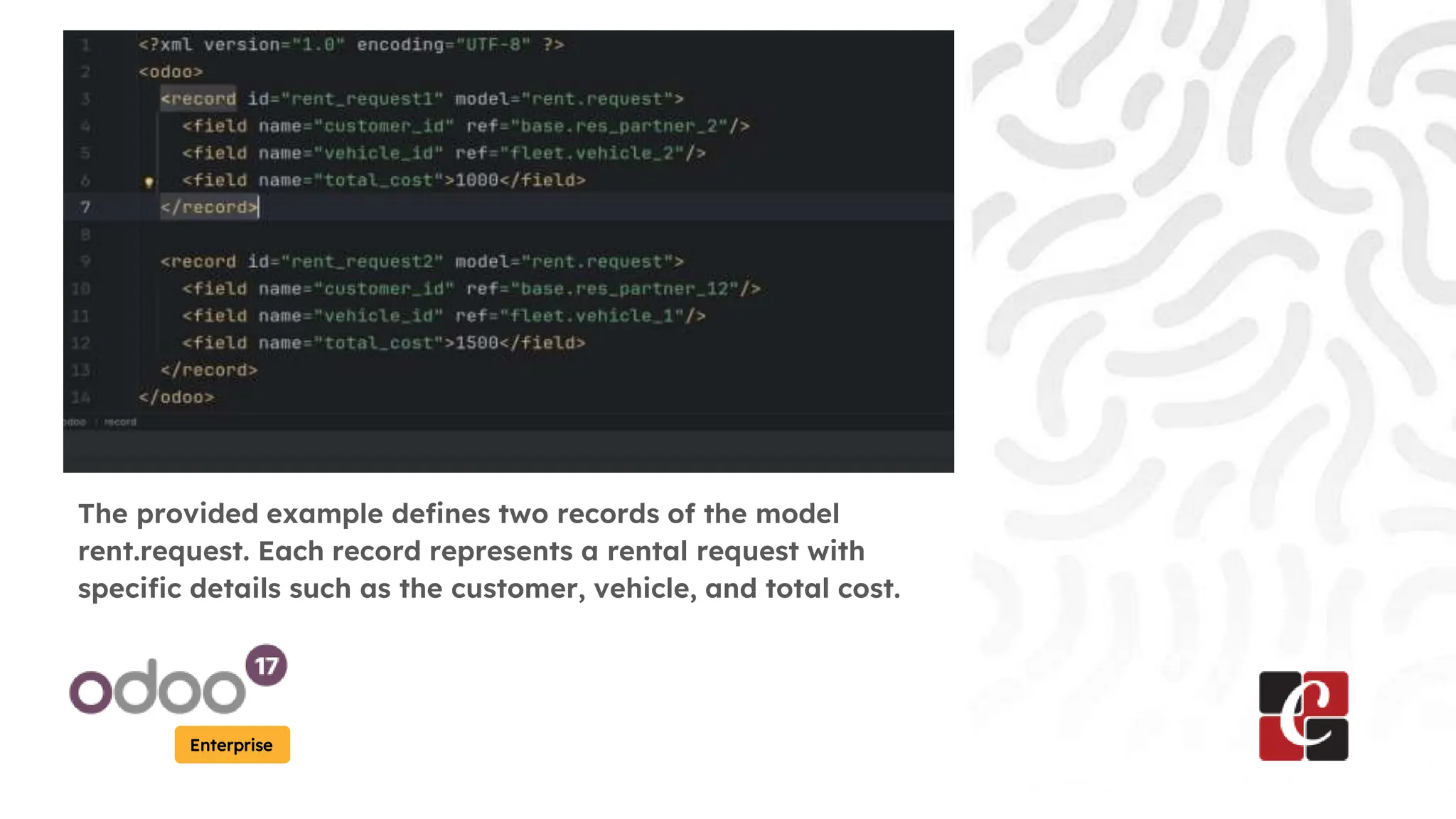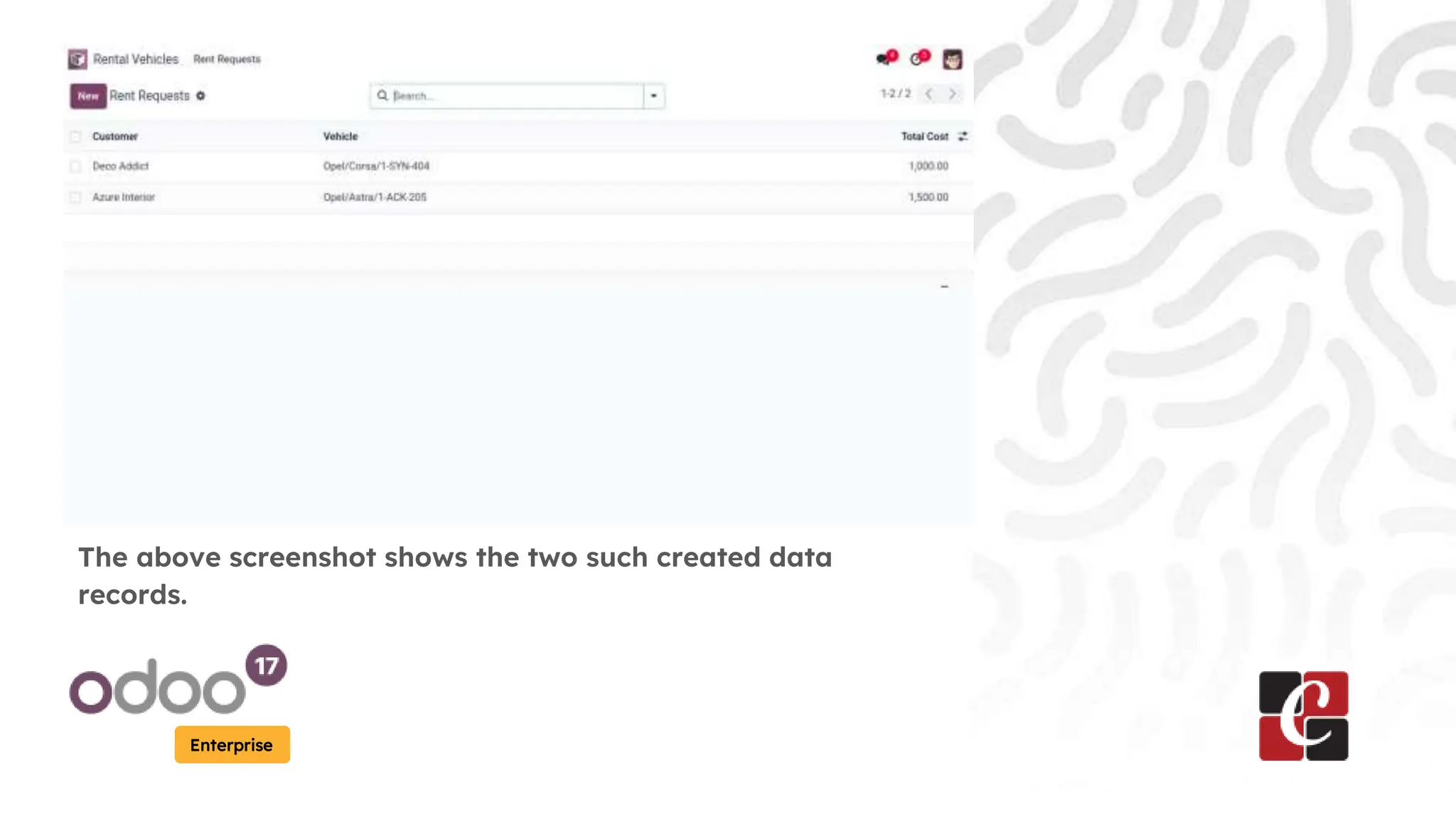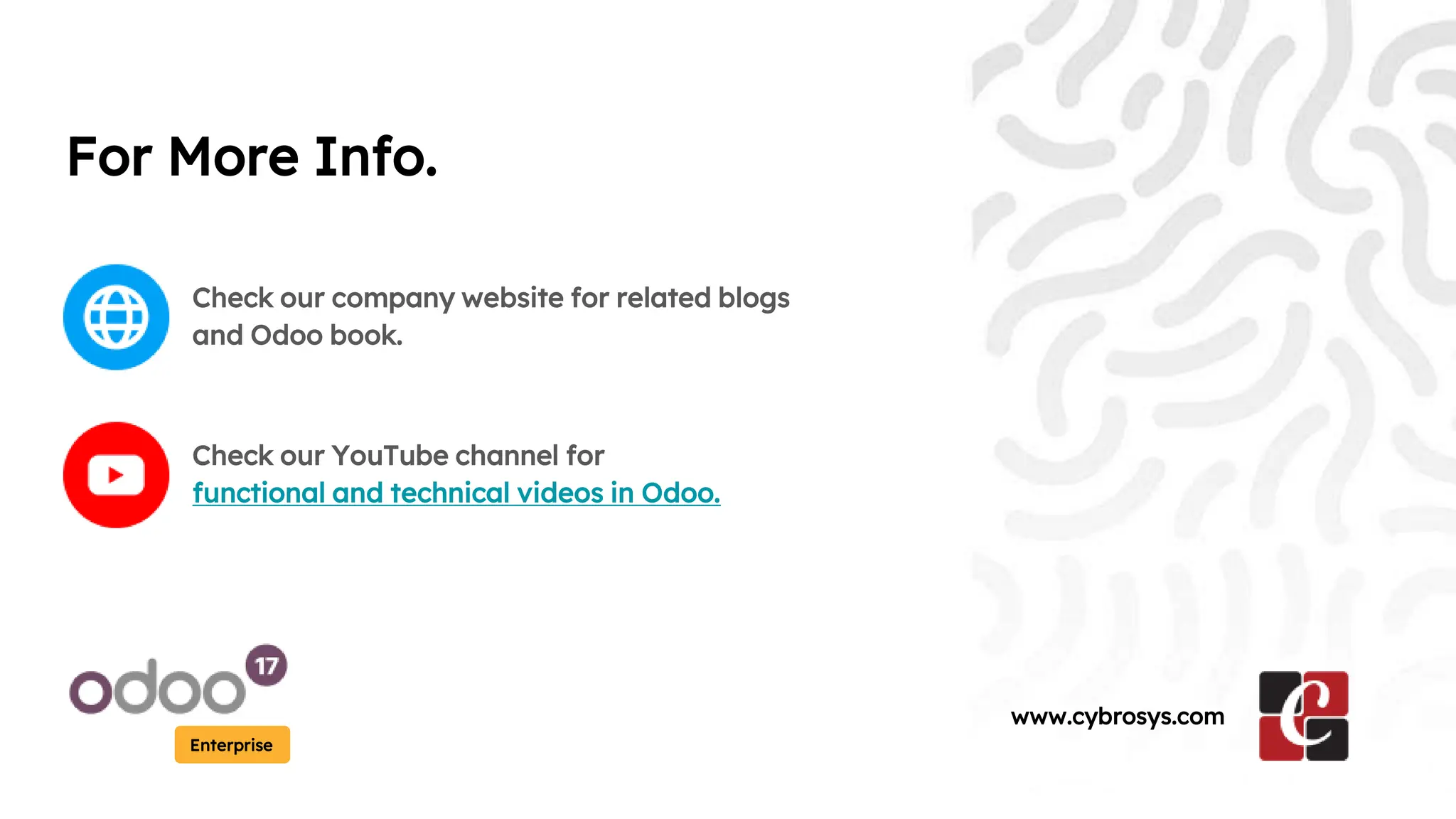The document explains how to add data files in Odoo 17 Enterprise using XML, which organizes essential module data such as menus and user access. It covers the structure of XML files with <record> and <data> elements for defining database operations and emphasizes the importance of the <data noupdate='1'> domain for one-time records. The document also provides examples of data records related to rental requests, along with resources for further information.
